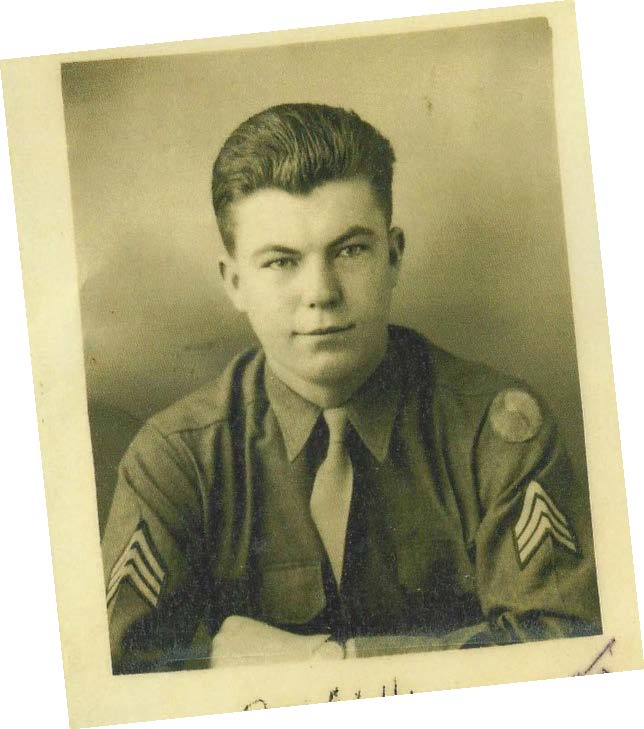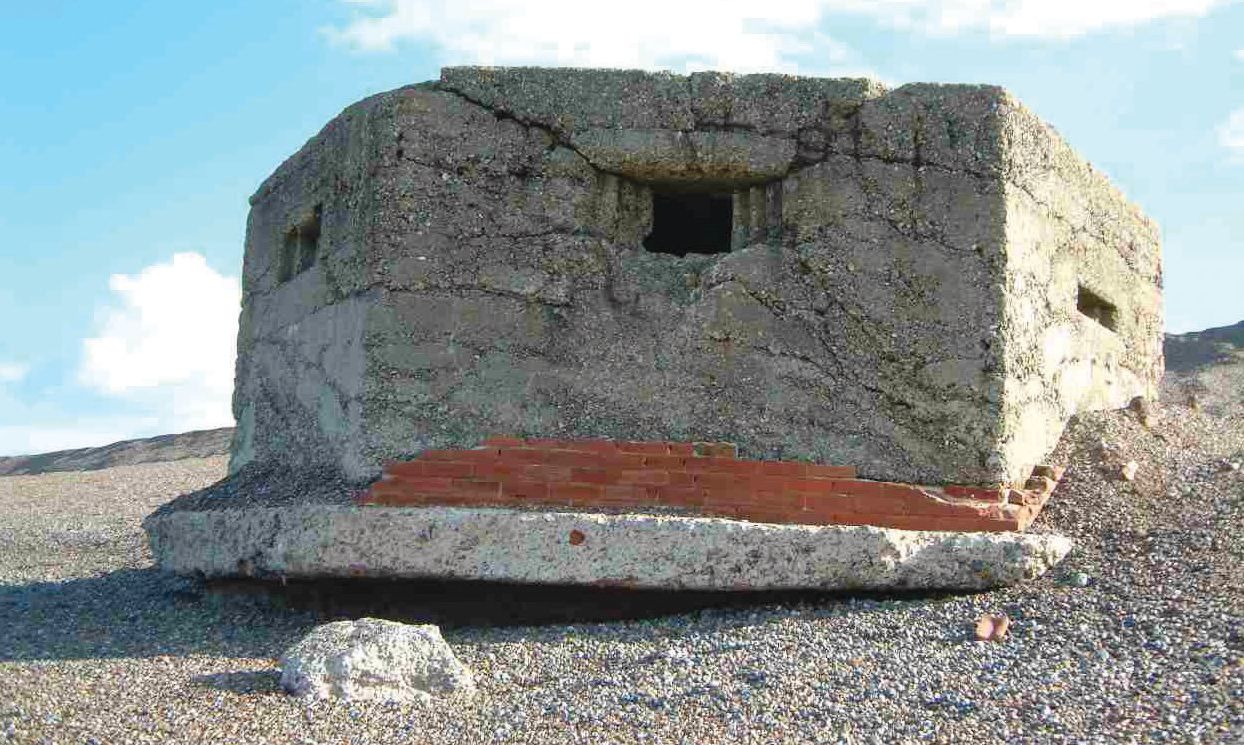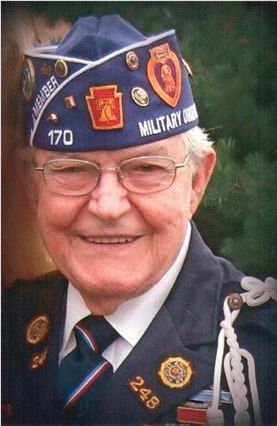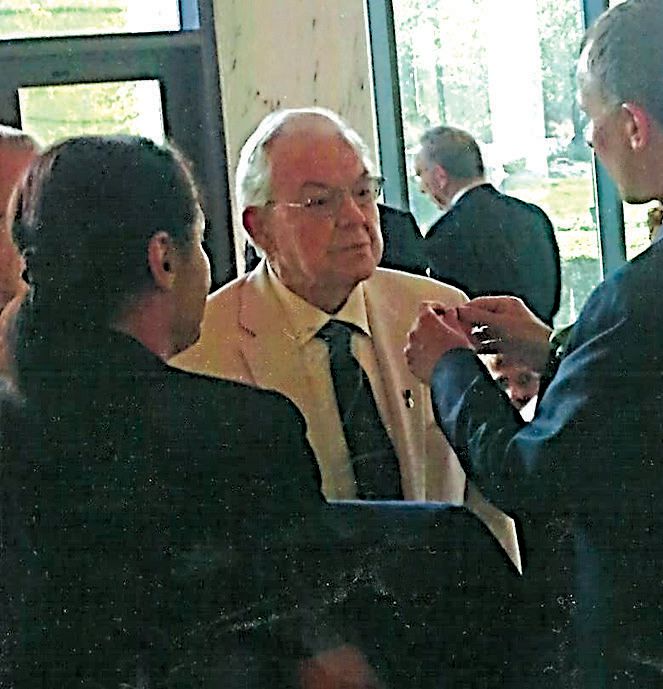A Soldier’s Life
Thomas T. Astrene | TLT Publisher's Pen March 2015
A tale of courage so epic it could only go on Page 1.
 The late Edward Haney as a 19-year-old Army sergeant.
The late Edward Haney as a 19-year-old Army sergeant.

A concrete-encased machine-gun nest similar to the one Edward’s squadron destroyed on Omaha Beach during D-Day.
LIKE MANY BIG STORIES, this one started small. The wife of a long-time STLE member called our office to let us know her husband had passed away. Could we update our records, she asked?
Normally when an STLE member dies, TLT runs an obituary focusing on his or her industry achievements in Newsmakers, one of our back-of-the book departments. I asked associate editor Rachel Fowler to work up the item.
A few minutes later Rachel popped into my office. “I found an online obituary on the member who passed away,” she said. “I think you should take a look at it.”
I read the article in the August 2014 issue of the Philadelphia Inquirer. Then I read it a second time. Then a third. Then again.
When I was done, tears were streaming down my cheeks. I wept for a man I never met, a man I never knew and never would.
His name was Edward T. Haney.

One of the final photos of Edward taken last year when he was 89.
His story began on June 6, 1944. That day Edward was one of 156,000 men who landed on the beaches of Normandy, France. More than 4,000 of them would never see the light of day again.
Edward joined the Army at 17, lying about his age. His father was a veteran, and his brother was already fighting in Italy.
Edward was a rifleman in the 29th Infantry, one of two divisions assigned to Omaha Beach. Due to a host of strategic factors, Omaha was the most heavily defended landing area and would see the bloodiest fighting and highest casualties.
Edward’s entire platoon was killed in front of him. On the spot, a major promoted Edward, then 19, from private to sergeant. His first order was to lead a squad and eliminate a German pillbox high up on the cliffs. The concrete-encased machine gun nest was preventing Allied soldiers from making it from their landing craft to the beach.
The only way to kill the German soldiers was to storm the pillbox, insert a pipe into one off the window slots and push a bomb through. Although wounded several times, Edward resisted orders to stay behind and continued fighting alongside his men.
 May 8, 2014: 70 years after D-Day, at a ceremony in the French Embassy in Washington, D.C., Ed Haney received the Legion of Honor medal, France’s highest military honor.
May 8, 2014: 70 years after D-Day, at a ceremony in the French Embassy in Washington, D.C., Ed Haney received the Legion of Honor medal, France’s highest military honor.
His squad was successful in its mission—but at the cost of many lives. If you’ve seen Saving Private Ryan, watch for this scene. The machine gun-nest sequence starts at 16:50.
That mission was only the beginning of Edward’s exploits during the war. A belly wound took him out of the war but only temporarily. After healing Edward insisted on returning to the fight. He was shot in the mouth and lost all his teeth. He went right back to the fight and had teeth implanted after the war.
Once, on an open field patrol, a German soldier stood up from behind a hedge, pointed his Luger directly at Edward and pulled the trigger. The gun jammed.
On another occasion, an incoming shell exploded in Edward’s foxhole, throwing him 30 feet in the air and blowing off both his kneecaps. He awoke in an English hospital where doctors said they were shipping him stateside. Edward would have none of it. He returned to battle.
Later he was captured by German soldiers, taken to a secluded area and beaten and tortured until he was rescued by an American squadron. When Edward looked up, the man standing in front of him was Gen. George S. Patton himself.
Toward the end of the war, Edward was with the squad that searched the bunker of Joseph Goebbels, the Nazi propaganda master. Assigned to search the basement, Edward stepped over a landmine. A moment later, the soldier behind him stepped on the same mine and was killed instantly.
“God saved his life so many times,” said his wife, Elaine Haney.
But not without a cost. Edward spent the rest of his life in a body wracked with pain. “If he did any kind of project around the house, he would be in bed for two or three days,” his wife said. Even into his later years, he endured operations to remove pieces of shrapnel from his body.
Edward continued fighting the war until VE Day, May 8, 1945. Among his many decorations were a Bronze Star, a Purple Heart and a European American Middle Eastern Campaign Medal with three bronze stars.
But one more honor awaited him.
Last year on May 8, one month shy of the 70th anniversary of D-Day, Edward was honored at the French Embassy in Washington, D.C., with the Legion of Honor medal, France’s highest military award.
“He waited years for it,” said Elaine Haney. “We changed our address, and the French thought he had died.”
Edward fervently hoped that he would not live his final years in a wheelchair. That wasn’t to be, but fate could not deny Edward entirely. When he received the Legion of Honor award, Edward rose from the chair and stood on his own legs.
After the war, Edward T. Haney became a lubrication engineer. He worked for Fiske Brothers Refinery Co. for 32 years.
On July 22, 2014, three months after he became a French Legion of Honor recipient, Edward died of congestive heart failure at the age of 89, leaving behind a wife, two children and seven grandchildren. He lived a lifetime longer than many of the 19-year-olds who fought beside him on the beaches of Normandy 71 years ago.
We talk a lot about generations these days. The Baby Boomers. The Generation Xers. The Millennials.
But there is only one Greatest Generation. Edward’s generation.
TLT has no military honors to bestow. But after I heard Edward’s story, I knew we would not be running his obituary in the back of the magazine. We would publish it on Page 1, the first time in our history we’ve placed something here other than the table of contents.
Loving husband, devoted father, leader of men, liberator of nations, changer of history.
From a grateful world, Edward, may you rest in peace.
 You can reach TLT publisher Tom Astrene at tastrene@stle.org
You can reach TLT publisher Tom Astrene at tastrene@stle.org.